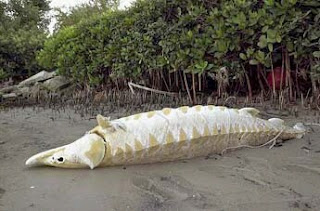When Colin Renfrew, back in the 1960s, was looking for a subject for his doctoral thesis, he chose to study the Cycladic figurines and the Cycladic early bronze age. Colin Renfrew was one of the brilliant crop of archaeologists nourished at Cambridge in the late 50s and early 60s by Grahame Clark and Glyn Daniel; indeed Colin became not only president of the Union but he gained a ‘first’ – a rather unusual distinction. In order to study the figurines and the cultures which produced them, he had to spend six months in the Cyclades, going round and visiting at first hand the sites from which figurines had been recovered. In fact almost all had been looted:they came from cemetery sites where the figurines were recovered and most of the accompanying objects thrown away.
One site in particular stood out, the one he discovered on the island of Keros on the 24th July 1963; he remembers the date in particular, as it was the day before his birthday. This was a large area of extensive looting at Dhaskalio Kavos; lying around on the surface there were fragments of figurines and the characteristic marble bowls, all broken. He felt that it was so important that in his thesis he named the Early Bronze Age 2 culture of the Cyclades, the Keros- Syros culture, after this site and the biggest known cemetery of Chalandriani on the island of Syros. And it is to this site on Keros, 43 years later, that he has returned.
Keros is a large uninhabited island in the eastern Cyclades, a group of islands hidden away behind Naxos. Keros is the largest, apart from Amorgos, but is now uninhabited: it is very mountainous and there is no fertile land for farming (and, it may be said, no good sandy beaches for tourists). Thus although 30 years ago there were still a couple of shepherds who lived there, it has now, like many remote islands, become totally depopulated.
In 1963 work began when Christos Doumas, who has sometimes been called the Mortimer Wheeler of Aegean archaeology and who was then the Epimelete, that is one of those in charge of archaeology in the islands, visited the site. He also decided to investigate the small but very steep island called Dhaskalio which lay just 80 metres off-shore, where there were reports of a medieval chapel. He swam across and spent a day clearing the chapel. He found little material of medieval date, but he did find masses of Early Bronze Age pottery of the Keros- Syros type. Was this a related site? Later the site of Kavos was extensively explored by the Ephor of the islands, Mrs Zapheiropoulou.
Then in 1987 the opportunity arose to conduct a survey project at Kavos, undertaken by Colin and by Christos Doumas in conjunction with Professor Lila Marangou. It soon became clear that it was a very unusual site: though there was a huge amount of material, it was all broken. It appeared that although some of the objects may have been manufactured there, others had been manufactured elsewhere and had been deliberately broken. The main concentration was named the ‘Special Deposit’. Was this the site of some elaborate ritual in which objects were brought there, broken and deliberately ‘sacrificed’? Or was it simply the remains of a very rich Early Cycladic cemetery, which had been systemati-cally looted? The fieldwalking guru, Todd Whitelaw, and his team undertook intensive survey for the project and predicted that a further ‘special deposit’ might be found 400 yards south of the original discovery. And there the matter rested until 2006.
The excavations begin
Colin was tempted to return and excavate both sites. What made this feasible was his winning of the Balzan prize, an equivalent of the Nobel prize, but for the humanities. It is worth 1m Swiss francs (around £400,000) and having spent much of the money on establishing a new scholarship in Cambridge, he felt he should be allowed a little self-indulgence, and for an archaeologist, self-indulgence means excavation: he determined to spend £100,000 on returning to Keros. By this time he had retired from his duties as Disney Professor of
Archaeology and Director of the McDonald Institute at Cambridge, and he had finished his stint as Master of Jesus College, Cambridge. Certainly the time was right to return to Keros. He raised funds from other sources, was granted permission to dig by the Greek authorities, and has now done two out of the three seasons.
Archaeology and Director of the McDonald Institute at Cambridge, and he had finished his stint as Master of Jesus College, Cambridge. Certainly the time was right to return to Keros. He raised funds from other sources, was granted permission to dig by the Greek authorities, and has now done two out of the three seasons.
The main result was that a further ‘special deposit’ has indeed been discovered 400 yards south of the ‘special deposit’ that he had discovered 40 years ago and which had been dug out by the looters. Due to the looting many questions remained. The findings were all fragmentary, including pottery, marble vessels and figurines and they were all different. Had they been brought to the site and then broken and deposited? Even more important was the question: was the deposit essentially a cemetery that had been churned up? Most of the other finds of Cycladic figurines come from cemeteries where they are accompanied by other objects, pottery vases, obsidian flakes and various stone objects. Were these remains of burials which had been ignored by the looters? Fortunately all knowledge of the new site was kept concealed from the looters: here was an opportunity to dig a special deposit archaeologically and to see what it really consisted of.
The evolutionary development of the early Cycladic figurines
The result so far had been pretty unequivocal: it appears indeed to be a ritual site, where the objects were deposited in pits in the ground. The contents of the pits were all carefully sieved with wet sieving to check for traces of human bones and none were found. Quite clearly this was not a cemetery. Equally the objects had not been broken on the spot, since the pieces did not fit together. They had been broken elsewhere, brought to Keros as fragments and then buried. Analysis of the pottery fragments showed that they came from
















